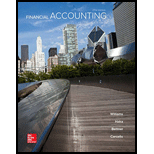
a.
Prepare the
a.
Explanation of Solution
Stockholders’ Equity Section: It is refers to the section of the balance sheet that shows the available balance of stockholders’ equity accounts as on reported date at the end of the financial year.
Prepare the stockholders’ equity section of the balance sheet for L Industries at December 31 2018:
| L Industries | ||
| Balance Sheet (Partial) | ||
| December 31, 2018 | ||
| Particulars | Amount ($) | Amount ($) |
| Stockholders’ equity: | ||
| 6% of | 1,000,000 | |
| Common stock, $20 par, 150,000 shares authorized, 80,000 shares issued, of which 400 shares are held in treasury | 1,600,000 | |
| Additional paid-in capital: Common stock | 1,200,000 | |
| Additional paid-in capital: | 6,000 | |
| Total paid-in capital | 3,806,000 | |
| 3,261,440 | ||
| Sub total | 7,067,440 | |
| Less: Treasury stock | 16,000 | |
| Total stockholders’ equity | $7,051,440 | |
Table (1)
Working notes:
Calculate the amount of additional paid in capital on treasury stock:
Step 1: Calculate the purchase price per share.
Step 2: Calculate the reissue price per share.
Step 3: Calculate the paid-in capital per share reissued.
Step 4: Calculate the total paid-in capital on treasury stock.
Calculate the amount of retained earnings at December 31, 2018:
Step 1: Calculate the amount of preferred dividends.
Step 2: Calculate the amount of common dividends paid during 2014-2015.
Step 3: Calculate the amount of common dividends paid during 2016-2017.
Step 4: Calculate the amount of common dividends paid during 2018.
Step 4: Calculate the amount of retained earnings at December 31, 2018.
Calculate the amount of treasury stock.
b.
Compute the book value per share of common stock.
b.
Explanation of Solution
The book value per share of common stock:
Therefore, the book value per share of common stock is $76.02.
c.
Explain what happened to the market price per share of the company split its stock 2-for-1 at December 31, 2018 and explain what happened to the par value of the common stock and to the number of common shares outstanding.
c.
Explanation of Solution
On December 31, 2018, the company decided to split its common stock 2-for-1. The market value of the share is decreases about $28 per share
Want to see more full solutions like this?
Chapter 11 Solutions
Financial Accounting
- Can you explain this financial accounting question using accurate calculation methods?arrow_forwardGive Explanation: Which of the following is classified as a current asset?a) Equipmentb) Accounts Receivablec) Accumulated Depreciationd) Bonds Payablearrow_forwardFinancial Accounting Question please answerarrow_forward
- Please provide the correct answer to this general accounting problem using accurate calculations.arrow_forwardWhich of the following is classified as a current asset?a) Equipmentb) Accounts Receivablec) Accumulated Depreciationd) Bonds Payablearrow_forwardWhich of the following is classified as a current asset?a) Equipmentb) Accounts Receivablec) Accumulated Depreciationd) Bonds Payablearrow_forward

 AccountingAccountingISBN:9781337272094Author:WARREN, Carl S., Reeve, James M., Duchac, Jonathan E.Publisher:Cengage Learning,
AccountingAccountingISBN:9781337272094Author:WARREN, Carl S., Reeve, James M., Duchac, Jonathan E.Publisher:Cengage Learning, Accounting Information SystemsAccountingISBN:9781337619202Author:Hall, James A.Publisher:Cengage Learning,
Accounting Information SystemsAccountingISBN:9781337619202Author:Hall, James A.Publisher:Cengage Learning, Horngren's Cost Accounting: A Managerial Emphasis...AccountingISBN:9780134475585Author:Srikant M. Datar, Madhav V. RajanPublisher:PEARSON
Horngren's Cost Accounting: A Managerial Emphasis...AccountingISBN:9780134475585Author:Srikant M. Datar, Madhav V. RajanPublisher:PEARSON Intermediate AccountingAccountingISBN:9781259722660Author:J. David Spiceland, Mark W. Nelson, Wayne M ThomasPublisher:McGraw-Hill Education
Intermediate AccountingAccountingISBN:9781259722660Author:J. David Spiceland, Mark W. Nelson, Wayne M ThomasPublisher:McGraw-Hill Education Financial and Managerial AccountingAccountingISBN:9781259726705Author:John J Wild, Ken W. Shaw, Barbara Chiappetta Fundamental Accounting PrinciplesPublisher:McGraw-Hill Education
Financial and Managerial AccountingAccountingISBN:9781259726705Author:John J Wild, Ken W. Shaw, Barbara Chiappetta Fundamental Accounting PrinciplesPublisher:McGraw-Hill Education





